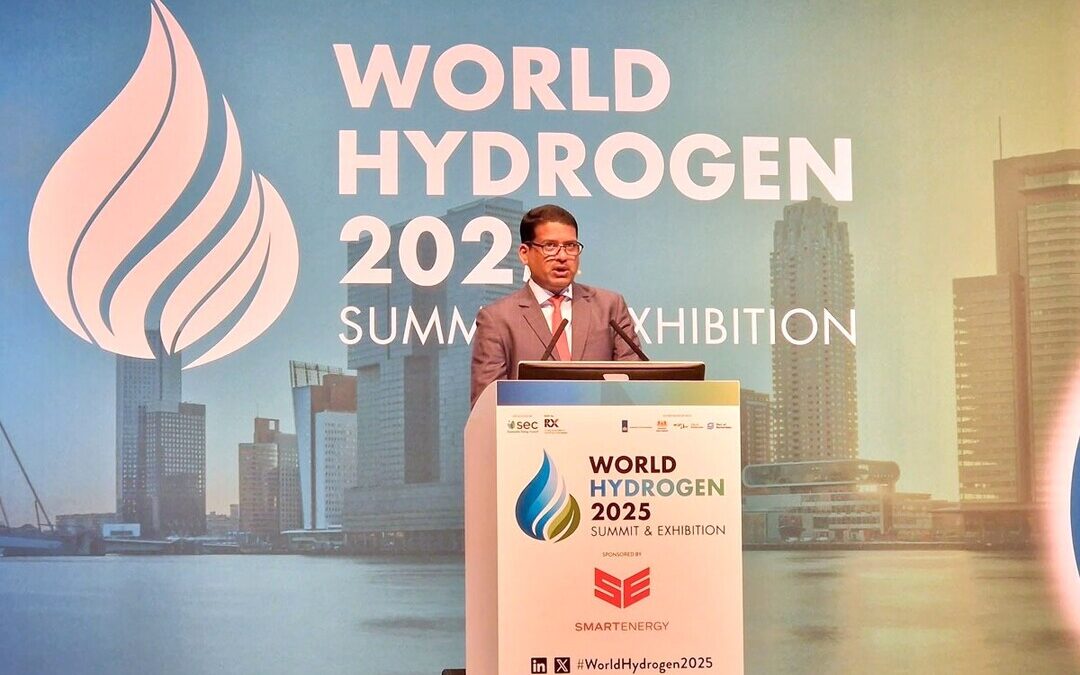India Showcases Clean Energy Vision at World Hydrogen Summit 2025
India outlines ambitious green hydrogen roadmap at World Hydrogen Summit 2025, seeking to attract $100 billion investment.
India presented its ambitions to emerge as a global green hydrogen powerhouse at the World Hydrogen Summit 2025 in Rotterdam, with its top renewable energy official highlighting the country’s strengths in renewable energy and hydrogen development.
Santosh Kumar Sarangi, secretary at the Ministry of New & Renewable Energy, addressed delegates at the annual summit, outlining India’s roadmap for scaling up green hydrogen production and reinforcing its commitment to energy independence and net-zero goals.
Renewable Energy Milestones
Sarangi underlined India’s rapid progress in the renewable energy sector, noting that the country has already installed over 223 gigawatts of renewable capacity, including 108 GW from solar and 51 GW from wind. This positions India among the world’s fastest-growing renewable energy markets.
“Our ambition to lead in the global green hydrogen economy is built on the strong foundation of our renewable energy capabilities,” he said, adding that the country aims to achieve energy independence by 2047 and net-zero emissions by 2070.
National Green Hydrogen Mission
Central to India’s strategy is the National Green Hydrogen Mission, launched in 2023 with an initial investment of $2.4 billion. The mission targets the production of 5 million metric tonnes of green hydrogen annually by 2030, with projected emissions reductions of 50 million metric tonnes of carbon dioxide per year.
The mission also seeks to attract $100 billion in investment and create more than 600,000 jobs.
Sarangi said the government has already allocated production capacity of 862,000 tonnes per annum of green hydrogen to 19 companies, and 3,000 megawatts of electrolyzer manufacturing capacity to 15 firms. Pilot projects have been launched in key sectors such as steel, mobility and shipping.
Policy and Infrastructure Push
Sarangi said India has introduced a Green Hydrogen Certification Scheme and adopted a “Whole of Government” approach to policy support. Environmental clearance has been waived for green hydrogen and ammonia projects, and three major ports — Kandla, Paradip and Tuticorin — have been identified as future hydrogen hubs.
Fifteen Indian states have also introduced supportive policies to drive the hydrogen economy.
Despite progress, Sarangi acknowledged the challenges of scaling up, citing high production costs, lack of standardization, and infrastructure gaps as key hurdles.
Global Export Potential
India envisions not only fulfilling domestic demand but also becoming a leading exporter of green hydrogen by 2030. “We invite all delegates to visit the India Pavilion and explore collaboration opportunities with Indian industries,” Sarangi said.
The summit appearance underlined India’s strategic intent to leverage its renewable energy base to build a globally competitive green hydrogen sector, contributing to economic development and global decarbonization efforts.
Also Read:
Cornell-Led Team Uses Sunlight, Seawater to Make Low-Cost Green Hydrogen
Nirmal Menon
Related posts
Subscribe
Error: Contact form not found.


